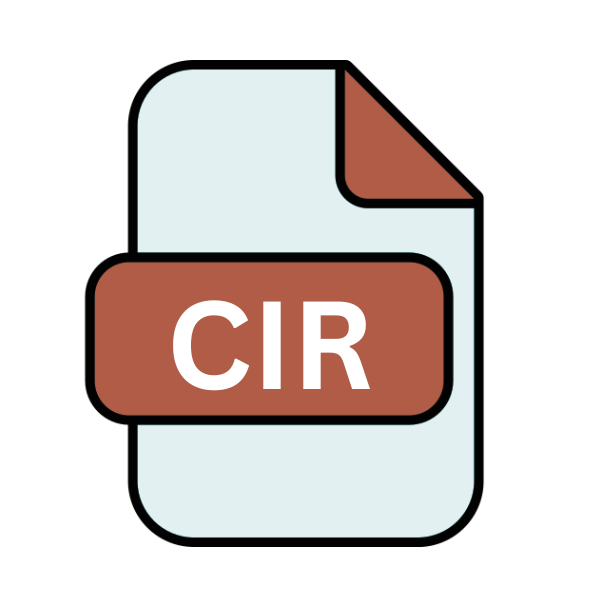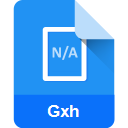.CIR File Extension

Micro-Cap Schematic
| Developer | Spectrum Software |
| Popularity | |
| Category | CAD Files |
| Format | .CIR |
| Cross Platform | Update Soon |
What is an CIR file?
The .CIR file extension is primarily associated with Micro-Cap, a sophisticated electronic circuit design and simulation software. These files are used to store schematic representations of electronic circuits, enabling engineers and designers to simulate, analyze, and optimize their designs.
Understanding .CIR files is essential for professionals working in electronics and circuit design, as they facilitate the visualization and testing of circuit behavior without the need for physical prototypes.
More Information.
Micro-Cap was first released in the early 1980s, a period marked by rapid advancements in computer-aided design (CAD) technologies. The initial purpose of .CIR files was to provide a digital means of capturing and sharing electronic circuit designs.
Before the advent of such tools, circuit design was a more manual process, often involving physical drawing and extensive calculations. The .CIR file format enabled designers to leverage computational power to simulate circuit behavior, dramatically improving the efficiency and accuracy of the design process.
Origin Of This File.
The .CIR file extension stands for “circuit,” reflecting its primary purpose of storing circuit schematics. This file format is integral to Micro-Cap, a software developed by Spectrum Software.
Micro-Cap has been a significant player in the field of electronic design automation (EDA), offering tools for analog, digital, and mixed-signal circuit design and simulation.
File Structure Technical Specification.
The .CIR file format is a text-based format, which means it is human-readable and can be opened with any text editor. The structure of a .CIR file typically includes:
- Header Information: This section contains metadata about the circuit, including the title, author, and date of creation.
- Component Definitions: Each component in the circuit (resistors, capacitors, transistors, etc.) is defined with a unique identifier, type, and parameters such as resistance, capacitance, or gain.
- Node Definitions: Nodes represent the connection points between components. Each node is assigned a unique identifier.
- Connectivity Information: This section describes how components are connected via nodes, defining the circuit’s topology.
- Simulation Parameters: These parameters control how the simulation is run, including the type of analysis (e.g., transient, AC, DC), time steps, and other relevant settings.
How to Convert the File?
Converting .CIR files to other formats is typically done using specialized EDA software. Some common conversions include:
- To Netlist Files: Many EDA tools allow exporting .CIR files to netlist formats, which are used by different simulation tools.
- To Visual Schematic Formats: Tools like OrCAD, Altium Designer, and KiCad can convert .CIR files into visual schematics for easier interpretation and modification.
Advantages And Disadvantages.
Advantage:
- Text-Based Format: Easy to read and edit with basic text editors.
- Interoperability: Can be used with various EDA tools that support the SPICE (Simulation Program with Integrated Circuit Emphasis) format.
- Flexibility: Suitable for both simple and complex circuit designs.
- Simulation Capability: Enables detailed simulation and analysis of circuit behavior.
Disadvantage:
- Complexity: Large circuits can result in very complex files that are difficult to manage manually.
- Error-Prone: Manual editing increases the risk of syntax errors, which can be hard to debug.
- Compatibility Issues: Not all EDA tools fully support the .CIR format, which may lead to interoperability problems.
How to Open CIR?
Open In Windows
Micro-Cap software provides comprehensive support for .CIR files on Windows. Users can install Micro-Cap, a specialized tool for circuit design and simulation, enabling easy access to .CIR files.
By navigating to File > Open, users can load .CIR files, facilitating viewing, editing, and analysis of circuit schematics within the Windows environment.
Open In Linux
NGSpice, an open-source SPICE simulator, offers robust functionality for .CIR files on Linux. Users can launch NGSpice and utilize command line options to load .CIR files (source filename.cir).
This enables simulation and analysis of circuits directly within the Linux environment, providing engineers and designers with a powerful tool for electronic design.
Open In MAC
MacSpice is a dedicated SPICE simulator for macOS, supporting .CIR files with ease. Users can open MacSpice and load .CIR files, enabling simulation and analysis of circuits on macOS systems.
This native support ensures compatibility and seamless integration for engineers and designers working on circuit design projects on Mac computers.
Open In Android
Android users can utilize mobile text editors such as QuickEdit or DroidEdit to open and edit .CIR files directly on their devices.
These apps provide a convenient way to access .CIR files on the go, enabling engineers and designers to make quick edits or review circuit schematics while working on Android devices.
Open In IOS
Text editor apps like Textastic offer support for .CIR files on iOS devices. By using these apps, iOS users can open and edit .CIR files on their iPhones or iPads, providing flexibility and convenience for engineers and designers who prefer working on iOS devices.
Open in Others
For other operating systems, including less common ones, engineers and designers can utilize online editors or cross-platform EDA tools compatible with .CIR files.
These tools provide accessibility across various operating systems, ensuring that users can view, edit, and analyze .CIR files regardless of their preferred platform.













